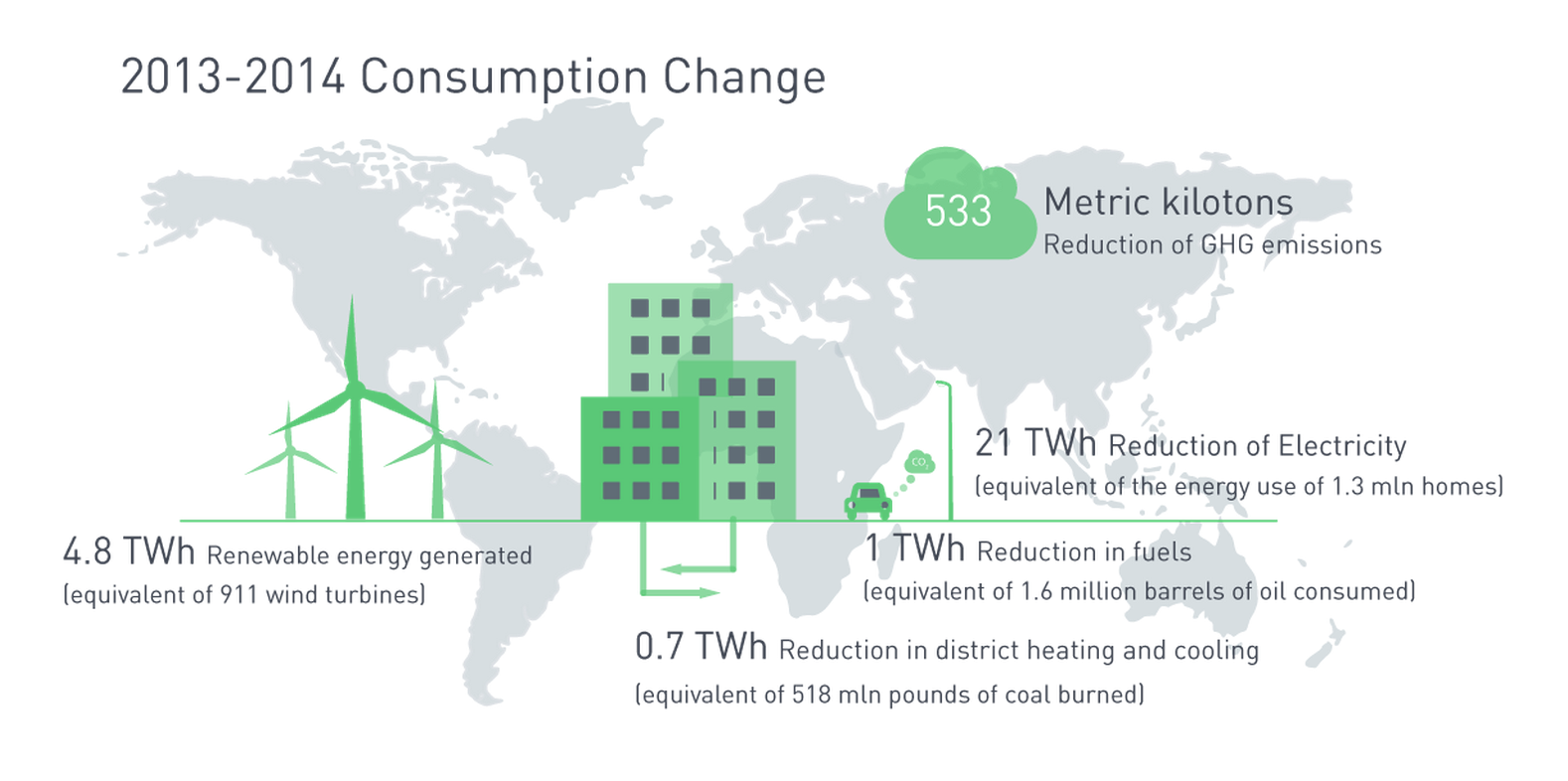Not surprising, sustainability efforts in the corporate real estate market continue to increase. Not only is it good for the environment and humankind, but it can save companies a pretty penny.
According to the Global Real Estate Sustainability Benchmark (GRESB), companies and funds reporting to the GRESB have improved their sustainability performance quite a bit over the past year, increasing from a score of 47 in 2014 to 56 in 2015. Specifically, global statistics show a 3% reduction in GHG emissions as well as an increase of 50% in on-site renewable energy generation.
{{cta(‘e16579c6-efa6-491c-b08d-4ab7d1fde29b’)}}

In general, awareness and drive towards sustainable workspaces is increasing.
While it’s definitely a must to consider sustainability when designing and constructing a new building, it’s difficult when you want to improve an existing building. Here are some simple tips to reduce your company’s energy consumption:
Expansion
1. When you’re looking to expand to another floor or section or even building, think twice about whether it’s really necessary. How many desks do you actually need? How have you come to this conclusion? Is it hard data, evidence based? Have you considered hoteling or hot desking?
Utilisation
2. Drive up the utilization of a given space while reducing energy in other spaces. If you observe that some conference rooms or collaboration spaces are highly utilized while others are not, nudge employees to those highly utilized areas while saving energy consumption in the underutilized areas (by turning off the lights in that area, for example).
3. To expand on the second tip, if you have highly underutilized spaces, consider subletting. Companies like Liquidspace are making this easy and accessible. Not only will you help the bottom line, but you will also reduce wasted energy consumption while helping another company who needs office space.
And for those who want to take it up a notch:
4. Use sensors to make your office smart and energy efficient. There are many different types of sensors that you can implement to improve the workplace. Here are some examples:
- Intelligent lighting to optimize space utilization. Watch this video that describes how Github saved $5000/month on its lighting bill.
- HVAC innovations that optimize temperature while saving energy
- Condeco’s Occupancy Sensors that help you measure the utilization of each specific workstation or space and transmit that data to an online dashboard in the cloud.
Sources
GRESB: https://www.gresb.com/results2015/introduction
Buildings.com